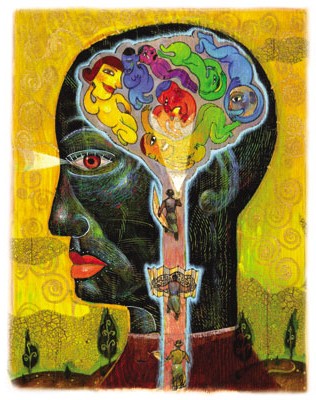 An article appearing in the Social Cognitive and Affective Neuroscience journal (SCAN) on the research study being done at the University of Pennsylvania School of Medicine discusses the difference in how the male and female brain responds differently when dealing with stress.
An article appearing in the Social Cognitive and Affective Neuroscience journal (SCAN) on the research study being done at the University of Pennsylvania School of Medicine discusses the difference in how the male and female brain responds differently when dealing with stress.
The researchers and Dr.J.J.Wang, PhD, Assistant Professor of Radiology and Neurology and lead author of the study, claim to have found different areas of the brain which activate and function in different ways for men and women when they are dealing with specifically performance-related stress.
The findings suggest the stress responses are a fundamentally different function in men and women. The male being referred to as “fight-or-flight” and “tend-and-befriend” in women. As a result of evolution, over time, males generally confronted stress by either dealing with it head on or fleeing from the situation.
Female, generally, may have instead responded by utilizing a nurturing approach and aligning themselves with social groups as a coping mechanism during times of adversity.
In Dr. Wang’s study, 32 healthy subjects (16 men and 16 women) were given MRI brain scans at different intervals of a challenging mathematical task that was performed under stressful circumstances.
The researchers escalated the stress in this experiment by frequently prompting participants to go faster and faster and would ask them to restart the task if their response was not correct.
The researcher also created a low stress control condition, where they asked the study subjects to count backwards, but applied no stress or pressure to the task.
The researchers found through the MRI tests that for the males the stress resulted in increased cerebral blood flow in the right pre-frontal cortex and reduced blood flow in the left orbito-frontal cortex.
In the females, under stress the limbic system was stimulated and activated. The limbic system is located in the mid-brain and is the first part of the evolutionary human brain where emotions formed. One very interesting observation in the study is that while both men and women’s brain activation lasted beyond the stress task, the activation lasted longer in females.
Dr. J.J. Wang claims, “Knowing that women respond to stress by increasing activity in brain regions involved with emotion, and these changes last longer than in men, may help us begin to explain the gender differences in the incidence of mood disorders.”
This study can help all of us to understand the HE/SHE difference a bit better and hopefully help us to create better communication with the opposite sex.
The study report can be found at: http://ts-si.org/neuroscience/2729-using-brain-imaging-to-demonstrate-male–female-differences



 It seems today we have a large menu of things to choose to worry about, from the economy to the latest flu epidemic heading our way. It is no wonder this is called the “age of anxiety” or that we are losing our grip on happiness and it is being replaced with anxiety. If you are female, the news is even more disconcerting. Science demonstrates that women are more prone to worry – that is at least more than men are.
It seems today we have a large menu of things to choose to worry about, from the economy to the latest flu epidemic heading our way. It is no wonder this is called the “age of anxiety” or that we are losing our grip on happiness and it is being replaced with anxiety. If you are female, the news is even more disconcerting. Science demonstrates that women are more prone to worry – that is at least more than men are.




